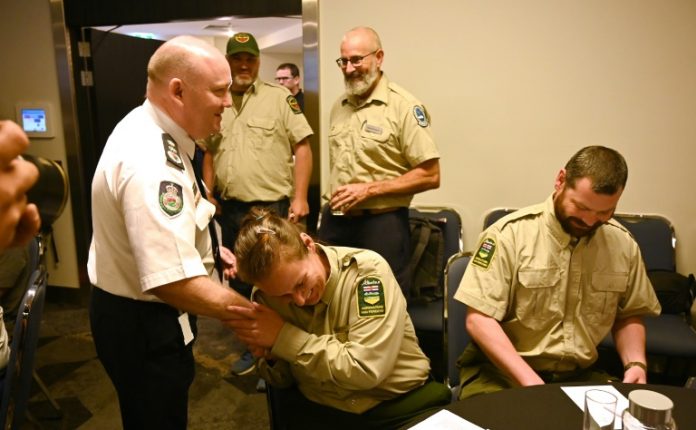Investigators Friday began searching the wreckage of a large tanker aircraft which crashed while battling devastating bushfires in Australia, killing three US crew members.
The C-130 Hercules plane slammed into the ground Thursday shortly after dropping a load of fire retardant on a blaze in the Snowy Mountains region of southeastern New South Wales (NSW) state.
The plane burst into a fireball on impact and debris were strewn over a kilometre-long stretch of land, with little of the large aircraft left intact, NSW police superintendant Paul Condon told a press conference near the site.
Greg Hood, chief of the Australian Transport Safety Bureau (ATSB) said it would be “premature” to speculate on the cause of the crash, but he noted that strong winds had raked much of the fire zones of southeastern Australia Thursday.
“We will be working with the Australian bureau of meteorology specifically to look at the temperature, the wind direction and the impact that may have had on the aircraft,” he said.
“We have nothing to suggest there was a systemic fault” with the C-130, which was contracted to the firefighting effort by Canadian firm Coulson Aviation, he said.
Hood said several people who witnessed the crash would also be questioned.
Coulson earlier Friday identified the three US crew members who perished as Captain Ian H. McBeth, 44, First Officer Paul Clyde Hudson, 42, and Flight Engineer Rick A. DeMorgan Jr, 43.
Their bodies have been found and were expected to be removed from the crash site later Friday, police said.
Officials from Coulson Aviation were due to arrive in Australia Saturday to join the investigation.
The ATSB said the crash site was in an active fire zone and investigators would need the help of police and firefighters to access the site.
The C-130 was equipped with a cockpit voice recorder, which has yet to be recovered, and investigators will also listen to air traffic control recordings, Hood said.
The crewmen’s deaths brought the toll in Australia’s bushfire crisis to 32 since September.
There are currently 243 US firefighters helping battle the Australian blazes, mainly in the country on 30-day rotations.
Six volunteer Australian firefighters were also injured when a water truck rolled near the fire-threatened town of Batemans Bay, on the state’s south coast, on Thursday night.

Firefighters had been battling dangerous blazes Thursday, as strong winds and temperatures reaching above 40 degrees Celsius (104 degrees Fahrenheit) sparked new fires across Australia’s southeast before conditions eased Friday.
Another heatwave is forecast for next week and could fuel a new flare-up of wildfires.
With the respite from active fires in many areas this week, a key concern is helping wildlife who survived the flames but now face starvation in the barren wastelands left behind.
Wildlife experts say hundreds of millions of animals likely perished in the blazes, which have burned more than 10 million hectares (25 million acres) of land.
On South Australia’s Kangaroo Island, one of the country’s richest and most unique wildlife areas, experts warned Friday of a looming “second wave” of animal deaths and urgently appealed for volunteers to help feed surviving creatures.
“Huge swathes of Kangaroo Island’s pristine habitat have been destroyed in the devastating January 2020 bushfires,” South Australia’s RSPCA said.
“Wildlife that survived the fires is now at high risk of succumbing to starvation and dehydration.”
“We don’t know how many animals are fending for themselves in totally barren landscapes, but wildlife rescuers are starting to find animals in extremely poor condition due to lack of food and water,” RSPCA chief Paul Stevenson told reporters.







